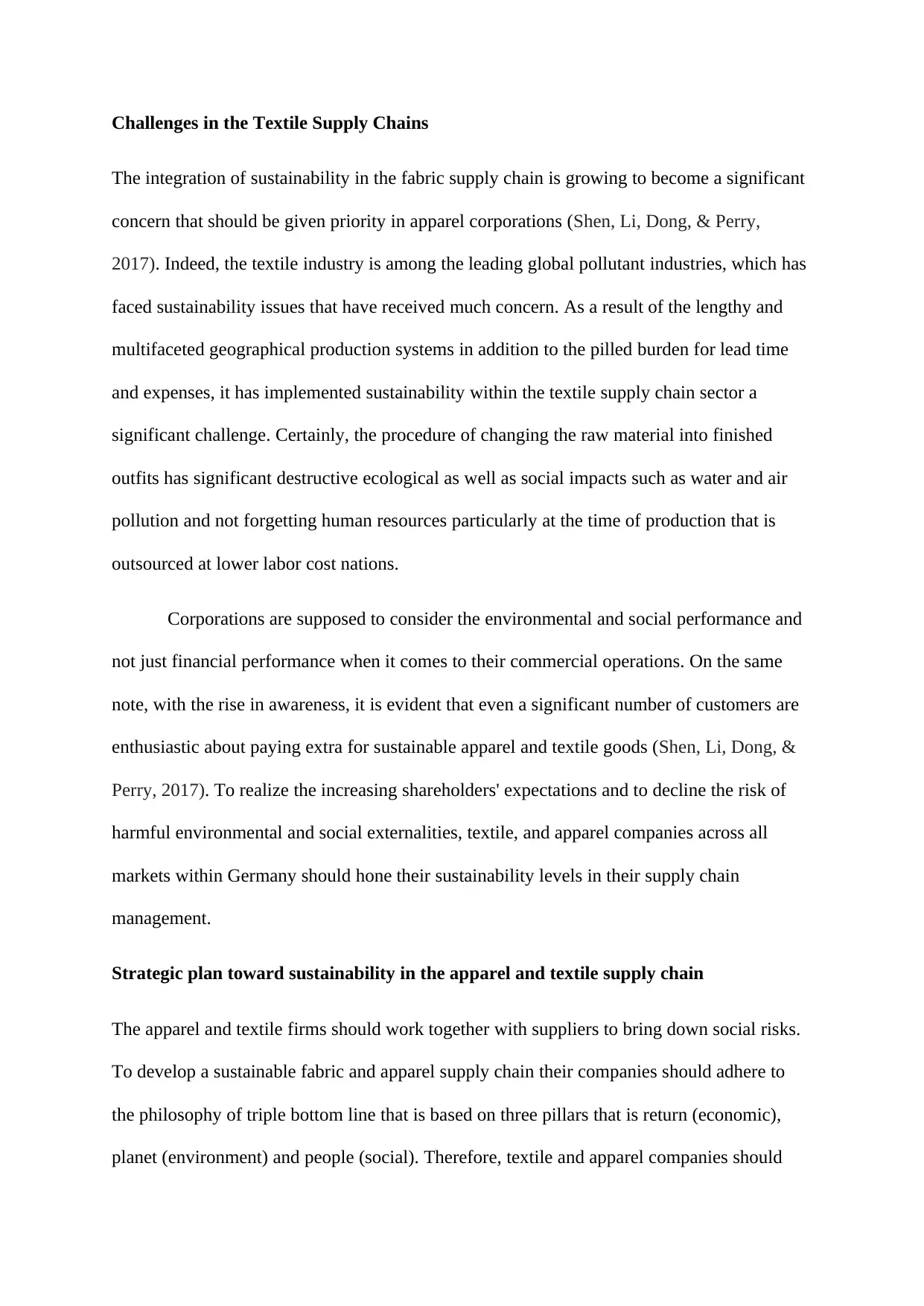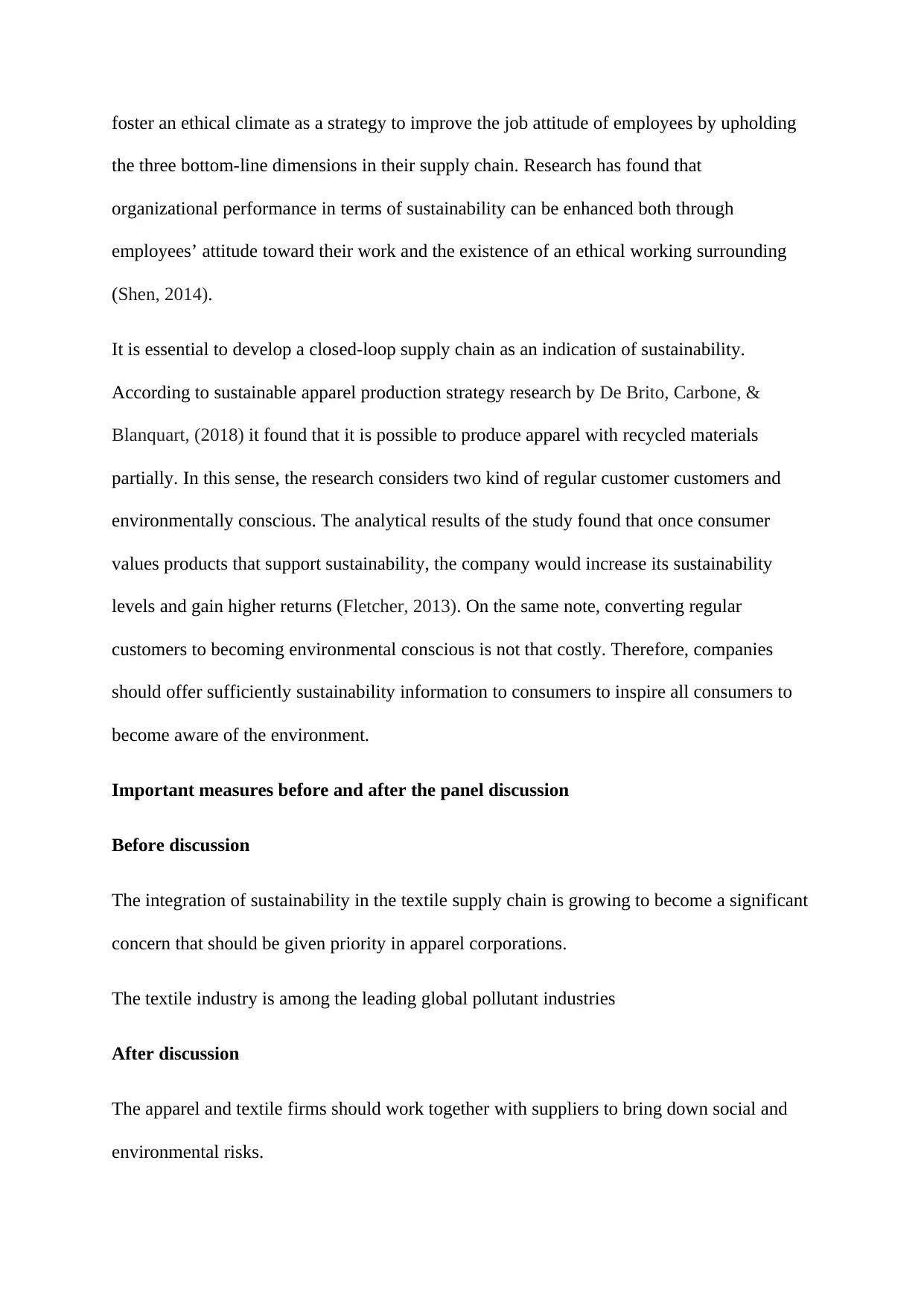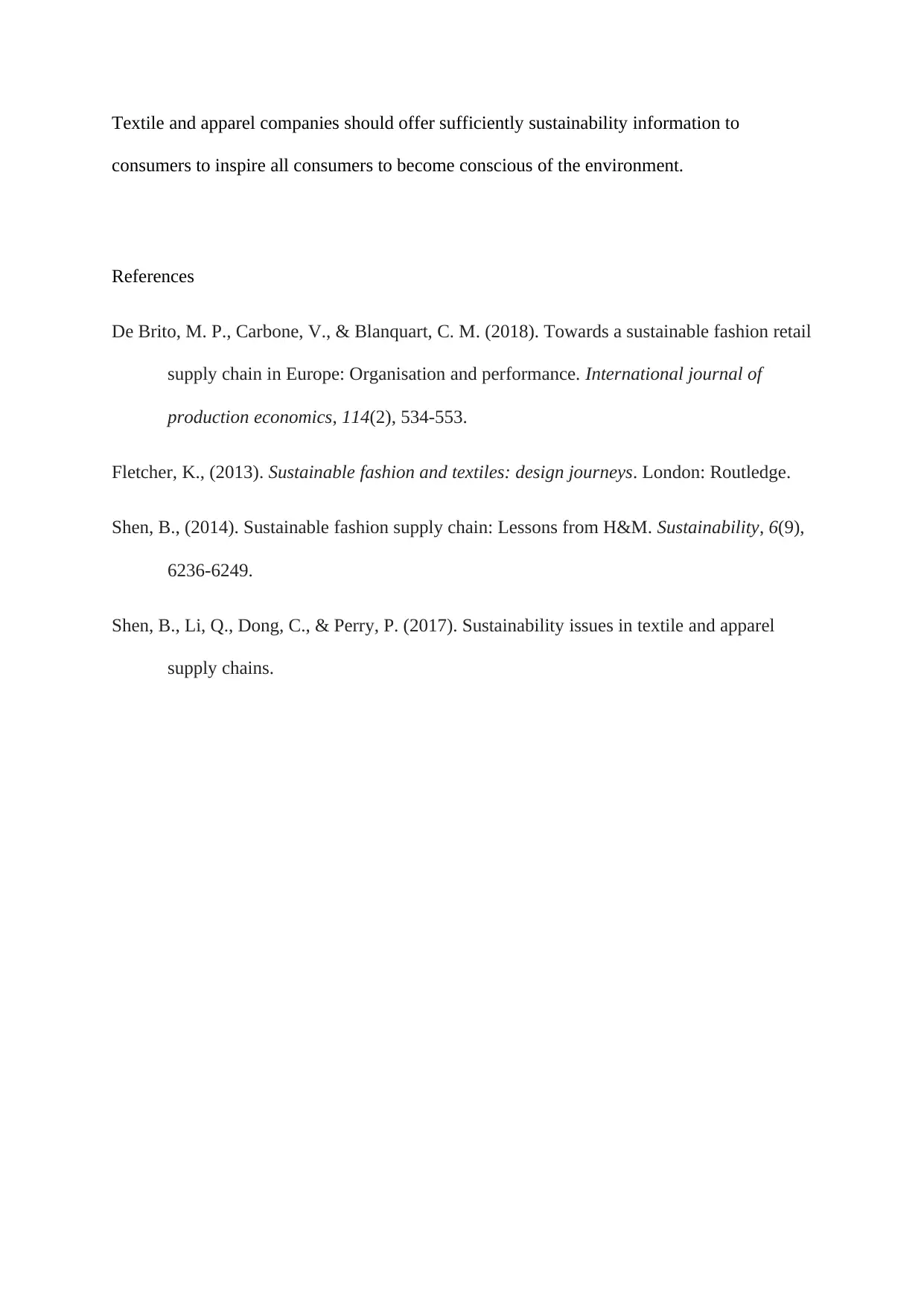Strategic Planning for Textile Supply Chain Challenges: A Report
VerifiedAdded on 2023/03/31
|3
|627
|281
Report
AI Summary
This report addresses the challenges of integrating sustainability into textile supply chains, emphasizing the industry's significant environmental impact and the growing consumer demand for sustainable apparel. It highlights the need for textile and apparel companies to prioritize environmental and social performance alongside financial gains. The report suggests that companies collaborate with suppliers to mitigate social risks and adopt a triple bottom line approach, focusing on economic return, environmental protection, and social responsibility. Furthermore, it underscores the importance of fostering an ethical climate to improve employee attitudes and enhance organizational sustainability performance. The report also advocates for the development of closed-loop supply chains using recycled materials and providing consumers with sufficient sustainability information to promote environmentally conscious choices. Key measures before a panel discussion include recognizing the textile industry's pollution, while post-discussion measures involve collaboration with suppliers and educating consumers to inspire environmental awareness.
1 out of 3










![[object Object]](/_next/static/media/star-bottom.7253800d.svg)